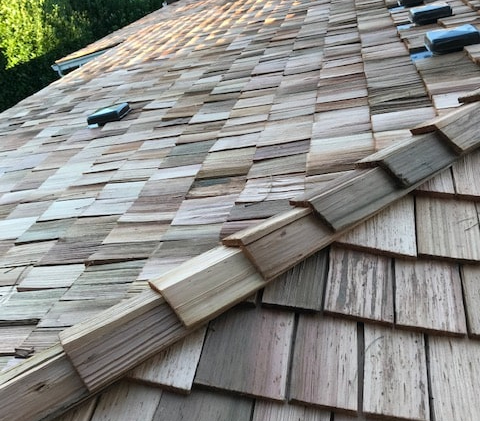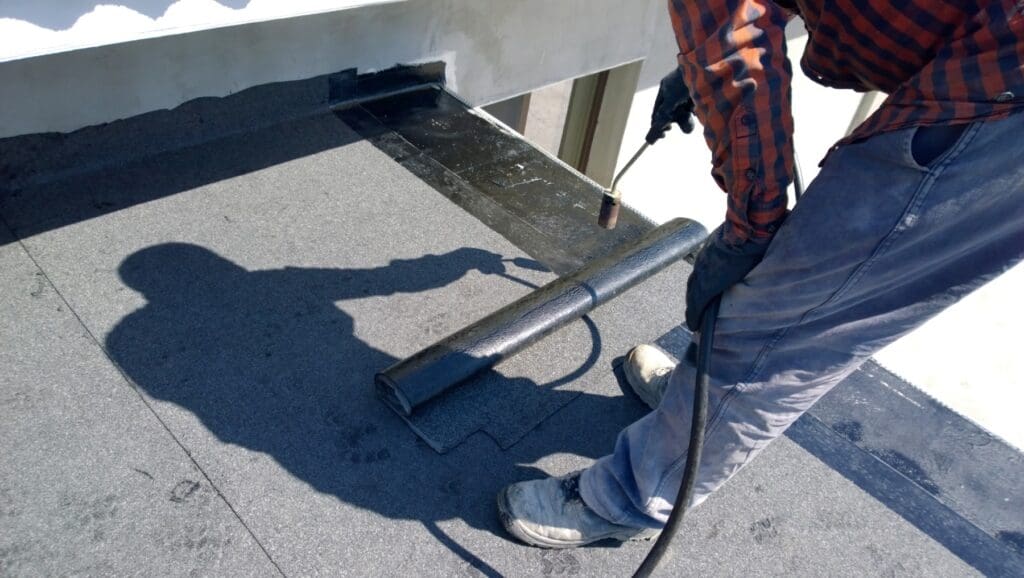
Published on July 16, 2024
(Updated July 2024)
A roof is more than just the crowning glory of your home; it is a crucial element that protects your family and belongings from the elements. Selecting the right roofing material is essential to ensure durability, aesthetic appeal, and energy efficiency. With various roof types available, choosing the best residential roofing options can be overwhelming.
In this blog, we will explore the most popular types of roofing materials, their benefits, price ranges, and considerations to help you make an informed decision. Depending on your situation, there is no one right roofing option for every home.
For example, if you live in a large luxury home, you may want the very best materials for your roof. If you need to replace the roof on a small bungalow rental, composition shingles may be your best bet. So there’s lots to think about–and Warner Roofing and Construction can answer all of your questions.
Best Residential Roofing Options
While architecture changes from home to home – Craftsman to Victorian to mid-modern to Tudor – there are basically two types of roof structures: flat or low-sloped and pitched. Here are a few of the best residential roofing options available to you:
- Composition Shingles
- Wood Shakes
- Metal Roofing
- Clay/Concrete Tiles
- Slate
Composition Shingles (Asphalt Shingles)
Composition shingles are the most common and popular choice for residential roofs. They are known for their affordability, ease of installation, and versatility. Asphalt shingle roofs are available in a wide range of colors and styles, making it easy to find an option that complements your home’s exterior. The cost of asphalt shingles generally falls within an affordable price range, making them accessible to most homeowners.
- Durability: Asphalt shingles have a lifespan of 15-30 years, depending on the quality and weather conditions.
- Fire Resistance: Many asphalt shingles have a Class A fire rating, the highest rating available.
- Energy Efficiency: Some asphalt shingles are designed with reflective coatings to improve energy efficiency.
 Wood Shakes
Wood Shakes
Wood shakes and wood shingles offer a natural and rustic appearance that enhances the charm of any home. Wood roofing materials are typically made from cedar, redwood, or pine. While they are more expensive than asphalt shingles, they provide a unique aesthetic that many homeowners desire.
- Durability: Wood shakes can last up to 30 years with the right maintenance, while wood shingles have a slightly shorter lifespan.
- Fire Resistance: Wood roofing requires proper treatment to achieve fire resistance, and untreated wood is not recommended in fire-prone areas.
- Maintenance: Wood roofs require regular maintenance to prevent mold, rot, and insect damage.
Metal Roofing
Metal roofing is a durable and long-lasting option that is gaining popularity among homeowners. It is available in various materials, including aluminum, steel, copper, and zinc. Metal roofs are known for their excellent weather resistance and energy efficiency.
- Durability: Metal roofs can last 50-100 years, making them a long-term investment.
- Fire Resistance: Metal roofing is non-combustible and offers excellent fire resistance.
- Energy Efficiency: Metal roofs reflect solar heat, reducing cooling costs by up to 25%.
- Styles and Colors: Metal roofing comes in a variety of styles and colors, mimicking the look of other roofing materials such as slate and wood.
Clay or Concrete Tiles
Clay tiles and concrete tiles are traditional roofing materials known for their distinctive appearance and durability. These tiles are heavier than other roofing materials, so it is essential to ensure that your home’s structure can support the weight.
- Durability: Clay and concrete tiles can last 50 years or more.
- Fire Resistance: Both materials offer excellent fire resistance.
- Weather Conditions: They are highly resistant to extreme weather conditions, including high winds and hail.
- Energy Efficiency: These tiles provide good insulation, helping to regulate indoor temperatures.
Slate Roofs
Slate tile roofs look fantastic, are very durable, and last as long as metal roofing with the right maintenance–but cost more than every other material on the list. They are extremely heavy, though, so the roofing structure needs to be able to handle that extra weight. They can also break or chip if not handled properly during installation or if they are walked on.
- Durability: Slate can last up 100 years when properly cared for
- Fire resistance: Fire will not be an issue with slate roofs
- Weather conditions: While it can stand up to almost anything, larger, heavier hail may chip slate.
- Energy Efficiency: The dense material provides excellent insulation.
Flat Roofs and Their Materials
 Flat roofs are commonly found on modern homes and commercial buildings. They offer a sleek, contemporary look and are often used to create additional outdoor living space. However, flat roofs require special considerations due to their lack of slope, which can lead to drainage issues. Various materials can be used for flat roofing, each with its own benefits and drawbacks.
Flat roofs are commonly found on modern homes and commercial buildings. They offer a sleek, contemporary look and are often used to create additional outdoor living space. However, flat roofs require special considerations due to their lack of slope, which can lead to drainage issues. Various materials can be used for flat roofing, each with its own benefits and drawbacks.
Built-Up Roofing (BUR): This traditional method involves multiple layers of bitumen and reinforcing fabrics. BUR is durable and provides excellent protection against water and UV rays.
Modified Bitumen: Similar to BUR, modified bitumen roofs use layers of asphalt-based sheets with added polymers for enhanced durability and flexibility. They are known for their ease of installation and maintenance.
Single-Ply Membranes: These membranes, including TPO (thermoplastic olefin), EPDM (ethylene propylene diene terpolymer), and PVC (polyvinyl chloride), are popular for flat roofs due to their lightweight, durable, and energy-efficient properties. TPO and PVC are particularly known for their reflective surfaces, which help reduce cooling costs.
Spray Polyurethane Foam (SPF): SPF is a unique option that involves spraying a liquid that expands into a foam, creating a seamless and insulating layer. It offers excellent waterproofing and energy efficiency.
Frequently Asked Questions
What is the lifespan of an asphalt shingle (composition or architectural) roof?
Composition shingle roofs typically last between 15-30 years, depending on the quality of the shingles and the installation. Regular maintenance can also help with the lifespan.
Are wood shakes a good option for fire-prone areas?
Untreated wood shakes are not recommended for fire-prone areas. However, treated wood shakes can offer better fire resistance, but still not as much as other options like composition or metal roofing. It’s important to check local building codes and regulations as well as the potential of wildfires.
How much does a metal roof cost per square foot?
The cost of metal roofing varies depending on the material and style. On average, metal roofs can range from $5 to $12 per square foot installed.
Can clay tiles withstand severe weather conditions?
Yes, clay tiles are highly resistant to severe weather conditions, including high winds, heavy rain, and hail. They are also fire-resistant and provide good insulation. But they can break if walked on during maintenance or repair.
What are the energy-efficient roofing options?
Metal roofing, some composite shingles with reflective coatings, slate, single-ply membranes like TPO and PVC, and spray polyurethane foam are all energy-efficient roofing options that help reduce cooling costs.
The Importance of Proper Installation
No matter which type of roofing material you choose, proper installation is required to ensure the longevity and performance of your roof. Poor installation can lead to leaks, reduced lifespan, and other costly issues. It’s essential to hire experienced and reputable roofing professionals who follow industry standards and best practices.
At Warner Roofing and Construction, we pride ourselves on providing top-notch roofing services to homeowners in Vancouver, WA. Whether you’re looking for a roof replace or are building a new home, our team of experts is here to help you select the best residential roofing options for your needs. Contact us today to schedule a consultation and get a free estimate. Let us help you protect your home with a durable, beautiful, and energy-efficient roof.